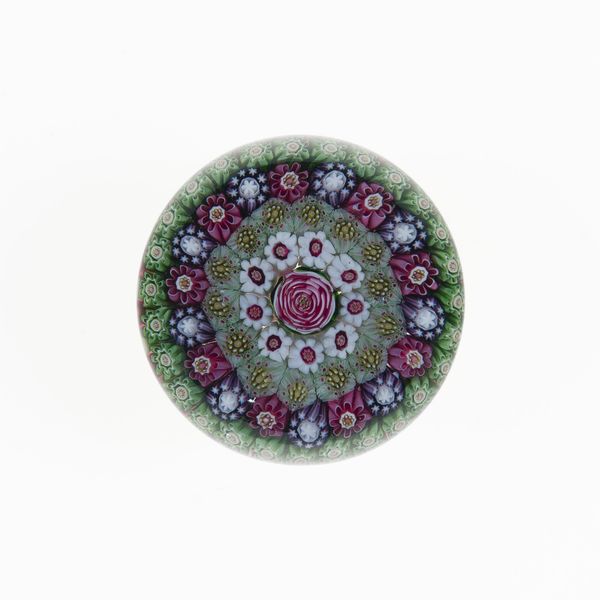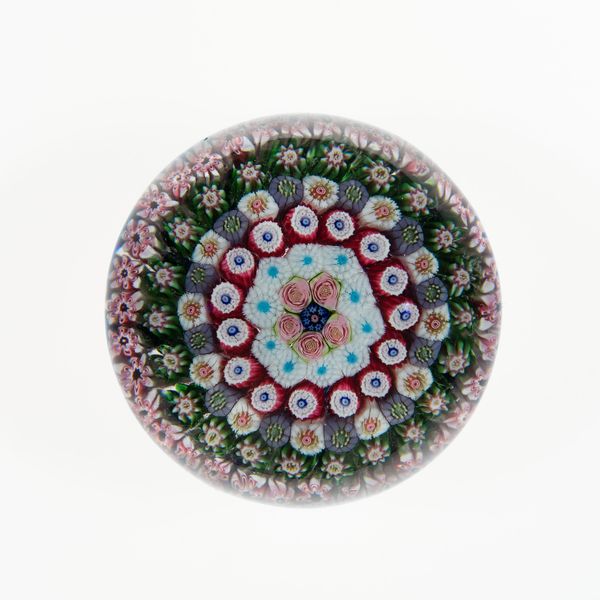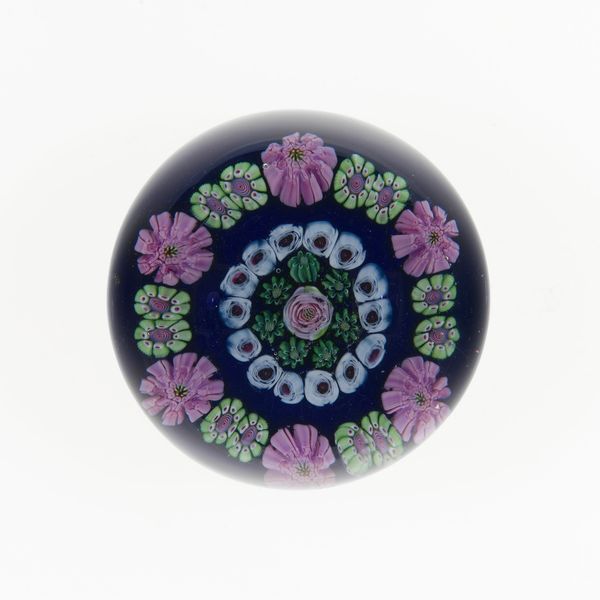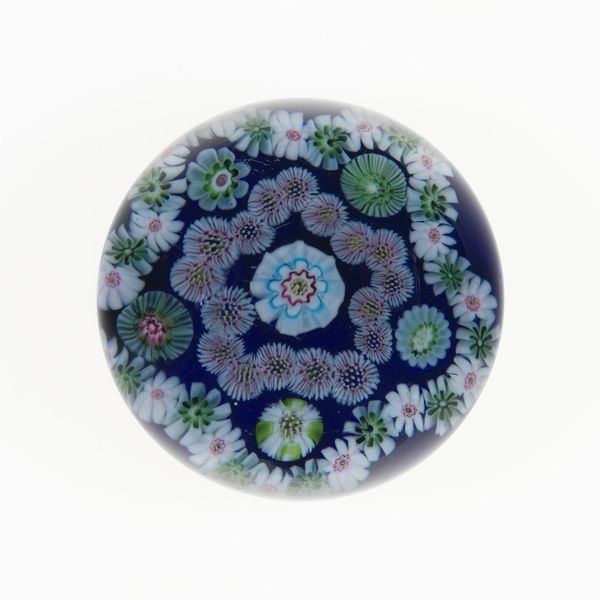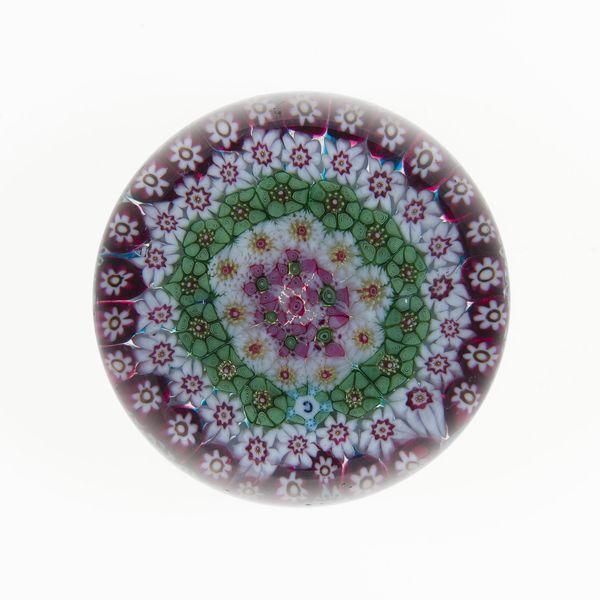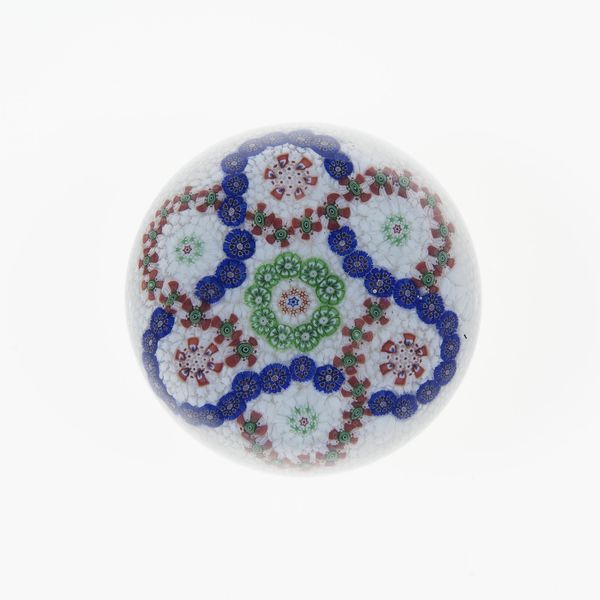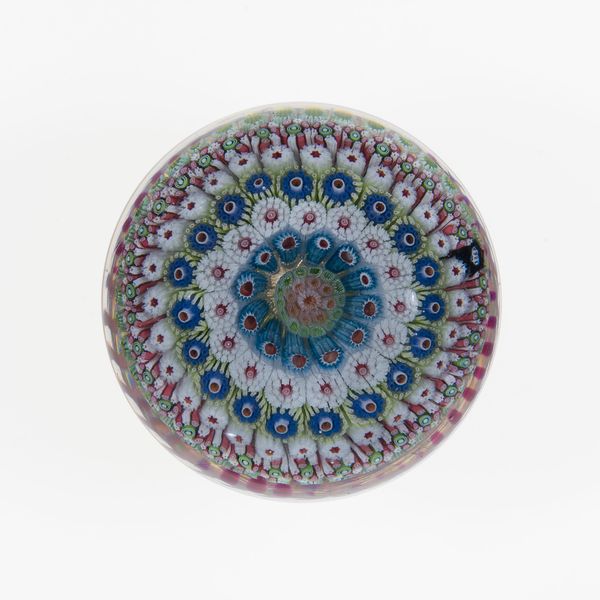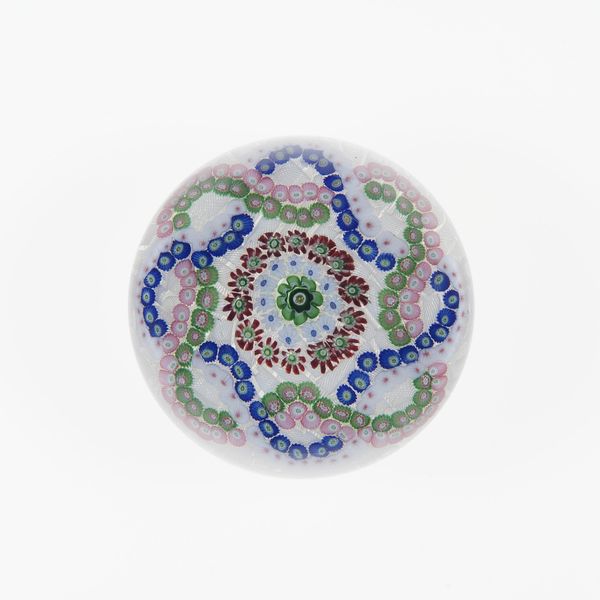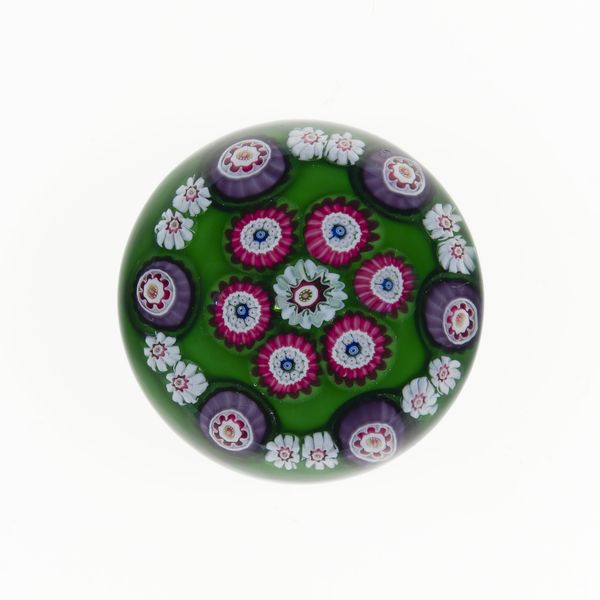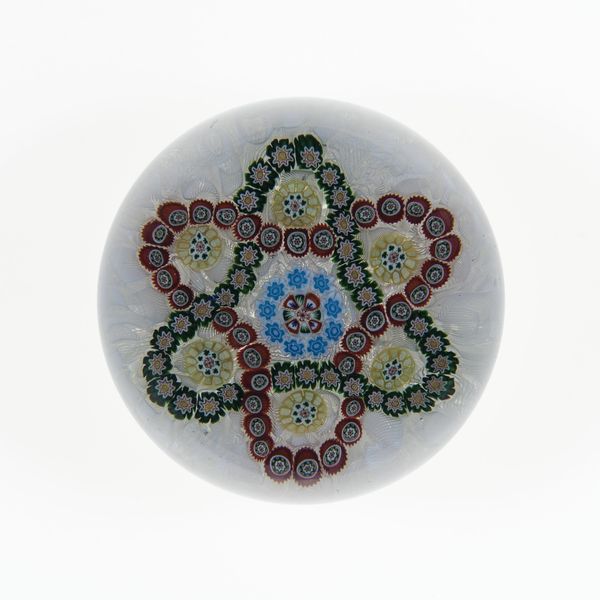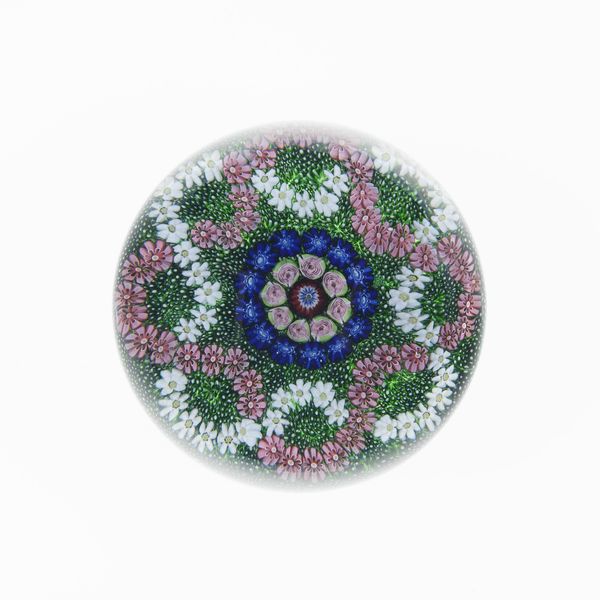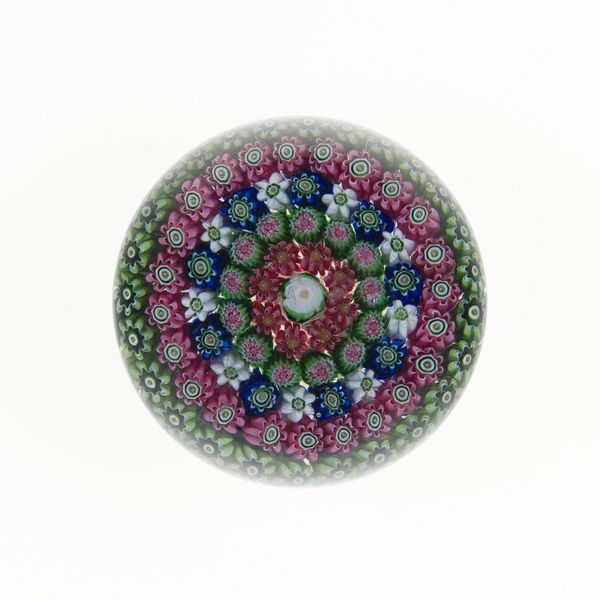
Dimensions: Diam. 8.6 cm (3 3/8 in.)
Copyright: Public Domain
Curator: Looking at this, my immediate response is that I’m captivated by the intricate patterns, almost like peering into a tiny, perfectly ordered universe. Editor: That's quite fitting. This is a "Paperweight," created circa 1846 by Baccarat Glassworks. It's housed here at the Art Institute of Chicago. Glass, of course, is its primary medium, and seeing these paperweights, one thinks about the status and consumer market for such highly-produced works. Curator: Right, consider the labor involved in producing something like this, too. To achieve this level of detail in glassmaking speaks volumes about the techniques mastered by Baccarat. We should think of each tiny component’s manufacture. Editor: Absolutely. Baccarat, as a company, really profited from the public’s demand for these objects in the 1840s and onward. Beyond function, the explosion of geometric motifs catered to a rising bourgeoisie looking for beautiful displays of affluence. It democratized artmaking as well. Curator: It's that democratization, this shift, that really catches my attention. Suddenly, skilled artisanal craftsmanship intersects with industrial production, offering a curious meeting of ‘high’ and ‘low’ art practices. Editor: These became very common drawing-room ornaments during the mid-19th century and offered ways of presenting luxury in domestic life. I mean, paperweights were in most of the important households and the owners displayed their exquisite taste via colorful patterns that can be found in these designs. Curator: The distribution speaks volumes too; Baccarat items popped up everywhere through retail outlets, appearing in trade catalogs, really tapping into developing consumer networks. This piece represents that moment where artisanal skill transitions towards mass consumption. Editor: Ultimately, "Paperweight" reminds us how deeply intertwined art is with socio-economic currents, and that luxury art can be present in everyday settings. It is through such material artifacts that we get to glimpse historical dynamics. Curator: And for me, it underlines how even an object so small can symbolize seismic shifts in labor practices and our relationship to manufactured items.
Comments
No comments
Be the first to comment and join the conversation on the ultimate creative platform.
